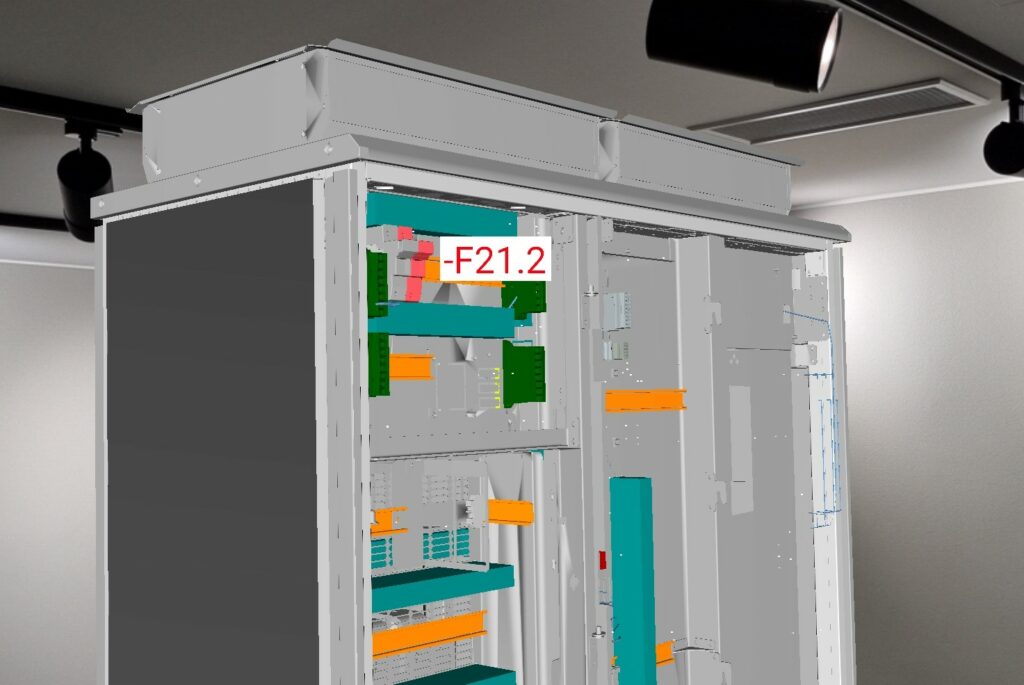What is augmented reality or AR? Augmented reality (AR) is an enhanced version of the real-world environment that is achieved through digital visual elements, sound, or other sensory stimuli delivered via technology. To distinguish it from virtual reality (VR), which creates its own isolated digital world, augmented reality adds elements to the real-world as it is. [1,2]
Augmented reality solutions can be utilized on various devices. One might have tested some consumer solutions with a smartphone or a tablet, but the breakthrough for technology is speculated to happen with wearable devices. Whereas the beforementioned can only show a portion of the user’s landscape, smart eyewear, for example, can provide a more complete link between the real and digital worlds. [1] Further, usually in industrial applications, it is crucial that both hands are available for work. That’s why our use cases with digital cabinets are designed to run with smart glasses.
In factory operations, the greatest benefits of AR are the most probably gained in new hire onboarding and training. With AR the inexperienced operators can be instructed step-by-step through the desired manufacturing process. The aim is to shorten the learning curve, to minimize the risk of non-conformities, and achieve the targeted level of productivity right from the start. The benefits of AR also depend on the amount of variation in the assembly process. In a simpler process, as time goes on and operators gain experience, also the benefits of AR start to decline as the constant checking of assembly steps will turn more frustrating than beneficial. With a more complex assembly process, the constant use of AR could be helpful since also the learning curve is longer. Regardless of the process type, the most essential requirement, and the basis of everything else is, that the glasses are light and convenient to use. Otherwise, there won’t be a buy-in from the operators.
In service operations, there are even more possible use cases for AR than in a controlled manufacturing environment. Augmented reality could be used to help navigate on a new site and reach the desired location in a safe manner. When arriving at the correct location, the drive system to be maintained can be identified and the correct maintenance instructions for the exact job shown step-by-step. During the work, the application-specific safety checks can be displayed, or the correct components and areas indicated when required. The main goal is to ensure safe service operations and secondly drive maintenance efficiency by adding required guidance.
References
[1] https://www.investopedia.com/terms/a/augmented-reality.asp
[2] https://dynamics.microsoft.com/en-us/mixed-reality/guides/what-is-augmented-reality-ar/

